The Derby d’Italia is highly anticipated matchup between two of the strongest clubs in Serie A. In the first edition of this derby earlier in the season, Juventus secured a 1-0 home victory over Inter. Coming into this match, Juventus has already been knocked out of the Coppa Italia and UEFA Champions League, and has already claimed their eighth scudetto. They have little left to play for, but Massimiliano Allegri wants to make sure his side finish the season strong.
Inter are hoping to secure Champions League football for next season and came into this match in third place. A victory would leave them almost certain of playing in Europe’s premier club competition next season. With Atalanta and Roma still chasing them, and a four-point lead over the fifth-place side, they control their fate if they can keep picking up points.
Inter were on the front foot from kick-off, and they opened up Juventus several times in the first 20 minutes. Radja Nainggolan scored in the seventh minute with a volley so cool you thought he was going to light a cigarette at the corner flag. With the strength of Inter’s attack, the only disappointment was their inability to build on their lead. As the first half went on, Juventus improved and started to present more of an attacking threat. They were also able to do a better job at breaking up Inter’s build-up.
After half-time, Juventus continued to attack. It seemed inevitable that they would score, and the goal came in the 62nd minute from Cristiano Ronaldo. After this, both sides presented sporadic attacking threats, but it was primarily a display of solid defending. Splitting the points at 1-1 might have seemed a fair result, but Inter could have taken all three if they had been able to convert their numerous chances in the first half.
Lineup
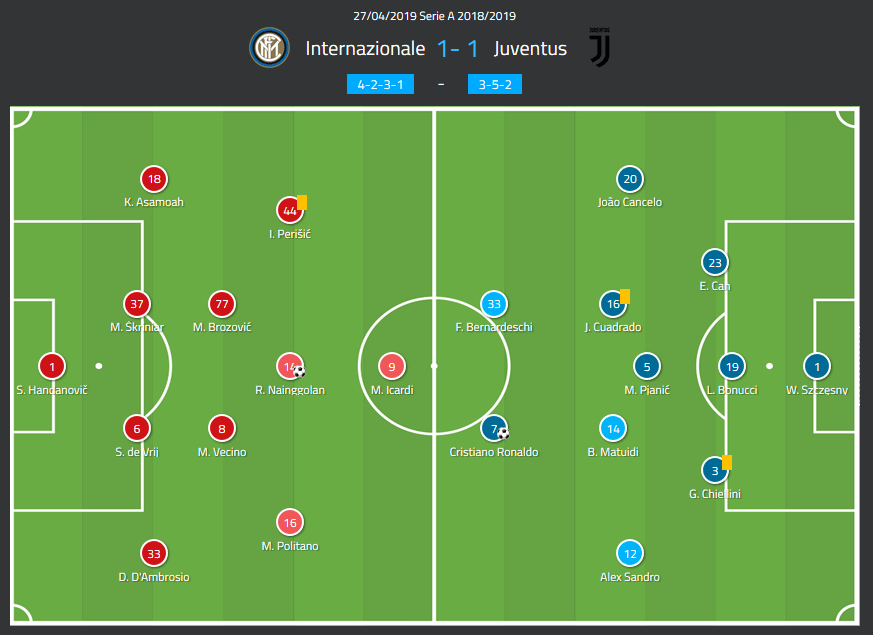
Luciano Spalletti’s side lined up in the 4-2-3-1 that has become their standard formation. He made two changes to the side that drew 1-1 at home to Roma a week earlier, but they were critical players. Marcelo Brozović returned from injury and took up his key central midfield role, with Borja Valero being dropped to the bench. Up front, Mauro Icardi got to lead the line instead of Lautaro Martínez.
After a 2-1 victory at home against Fiorentina, Allegri only made one change. Giorgio Chiellini returned to the starting line-up for the first time since 2 April. With his return, Daniele Rugani dropped to the bench. With Mario Mandžukić still missing with injury, Federico Bernardeschi paired with Cristiano Ronaldo up front.
Keys to the match
In this tactical analysis, we will look at how Inter were able to create chances and dominate the attack in the opening 25 minutes. We will also examine how Juventus were able to make small changes that ultimately worked to break up Inter’s attack in the build-up. Finally, we will look at how Juventus’ attack was able to get better as the match went along.
Inter start strong through Brozović
Inter started this match strong, and they were able to build possession from the back successfully. A key factor in their build-up was Marcelo Brozović, as he did an exceptional job sitting in a deep midfield role and linking the defence and attack together. The Croatian did a good job moving laterally to find small pockets of space to receive the ball from the centre-backs, before playing progressive passes between Juventus’ lines. As we can see in the image below, Brozović can find a gap to receive the ball and has available passing lanes forward to Arsenal target Perišić on the left wing and Nainggolan centrally.
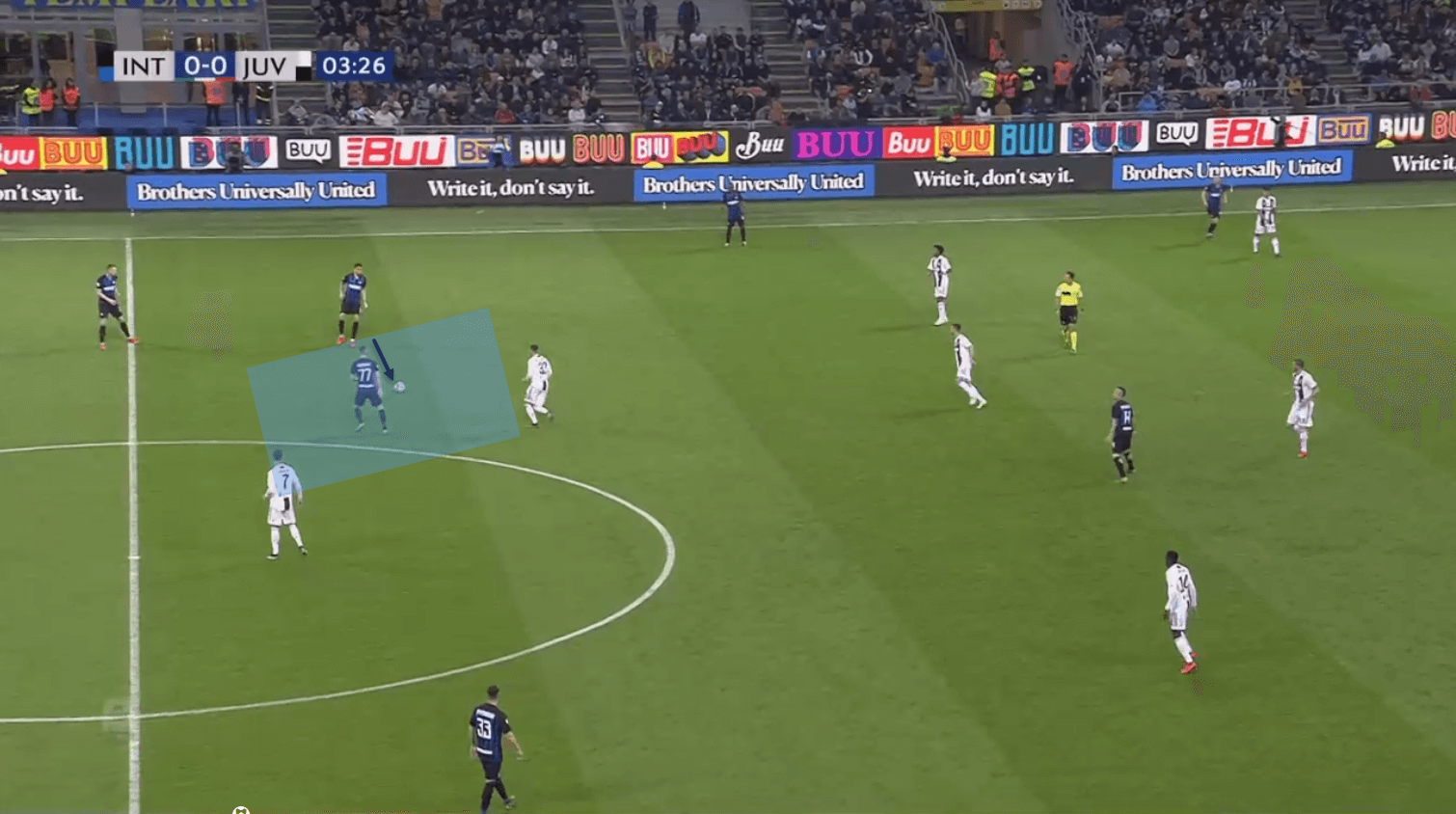
Supporting him was Matías Vecino, but he functioned in a more box-to-box role. He was active in deeper areas during the build-up, but as the ball moved into the final third, he made third-man runs into the box that caused problems for Juventus. His work-rate and willingness to get forward was an important aspect of Inter’s attack.
Also operating in this area was Radja Nainggolan, who tended to stay higher up the pitch. When the build-up was progressing slowly, he would drop deeper to create overloads and provide passing angles. In the attack, Nainggolan was also more active in the half-spaces. He would often combine with the wingers to overload the Juventus fullbacks.
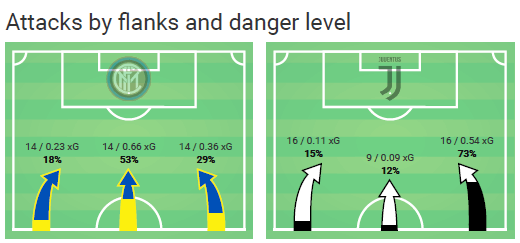
Inter built-up from the back through the centre of the pitch, but they would then transition their attack to the flanks in the final third. Both Perišić and Matteo Politano were dangerous from wide areas. They were willing to run and take-on Juventus’ fullbacks, and often got the better of them. They also delivered numerous well-placed crosses, and the Bianconeri had problems dealing with them.
Perišić and Politano made effective runs to get in behind Juve’s backline, and Inter had success exploiting this. In the image below, we can see former Juventus player Kwadwo Asamoah hit a pass into the channel between João Cancelo and Leonardo Bonucci. Perišić times his run well and gets onto the through pass inside the 18-yard-box before his cross is blocked by a last-ditch tackle.
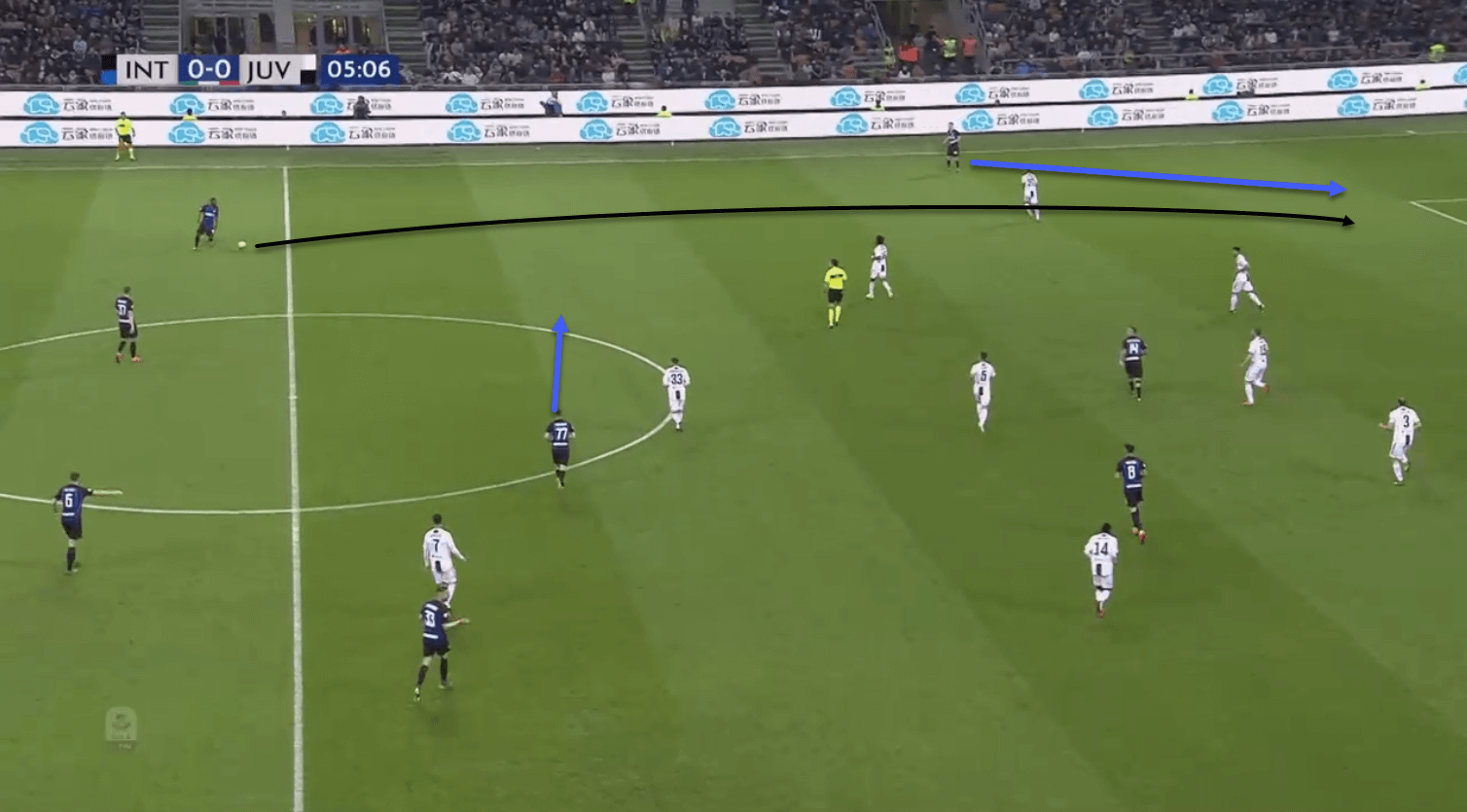
How Inter defends vs how Juventus defends
From the opening whistle, Inter were committed to pressing Juventus high up the pitch. They had success with this in the opening half, forcing recoveries in the middle third of the pitch. Icardi did an excellent job at closing down passing lanes while applying pressure on the Juventus centre-backs. This would force the ball back to Szczęsny and an aimless ball downfield.
As we can see in the image below, Cancelo is closed down by Nainggolan. The Belgian midfielder also closes off the passing lane to Pjanić. His closest passing option is Bonucci, but Icardi is ready to cut that pass out. Cancelo is eventually forced to clear the ball up the touchline, and it goes out for an Inter throw-in.

Inter’s press allowed them to recover the ball high up the pitch in the 12th minute and resulted in an excellent chance for Icardi to put the home side up by two goals. They had another opportunity less than two minutes later, but again Inter were unable to capitalise on the mistakes.
Juventus defended in a medium block 4-4-2 and showed no interest in pressing Inter high up the pitch. This aided Inter in their build-up, as they had very little defensive pressure applied to them. While this tactic needn’t have been a disaster, the fact that Juventus had so much space between the lines allowed Inter to bypass the Juventus midfield easily. There was very little connection between the defensive line and the midfield line, and this allowed Nainggolan and Icardi the space to receive passes. As we can see in the image below, there is a 20-yard gap between the Juventus defence and midfield.
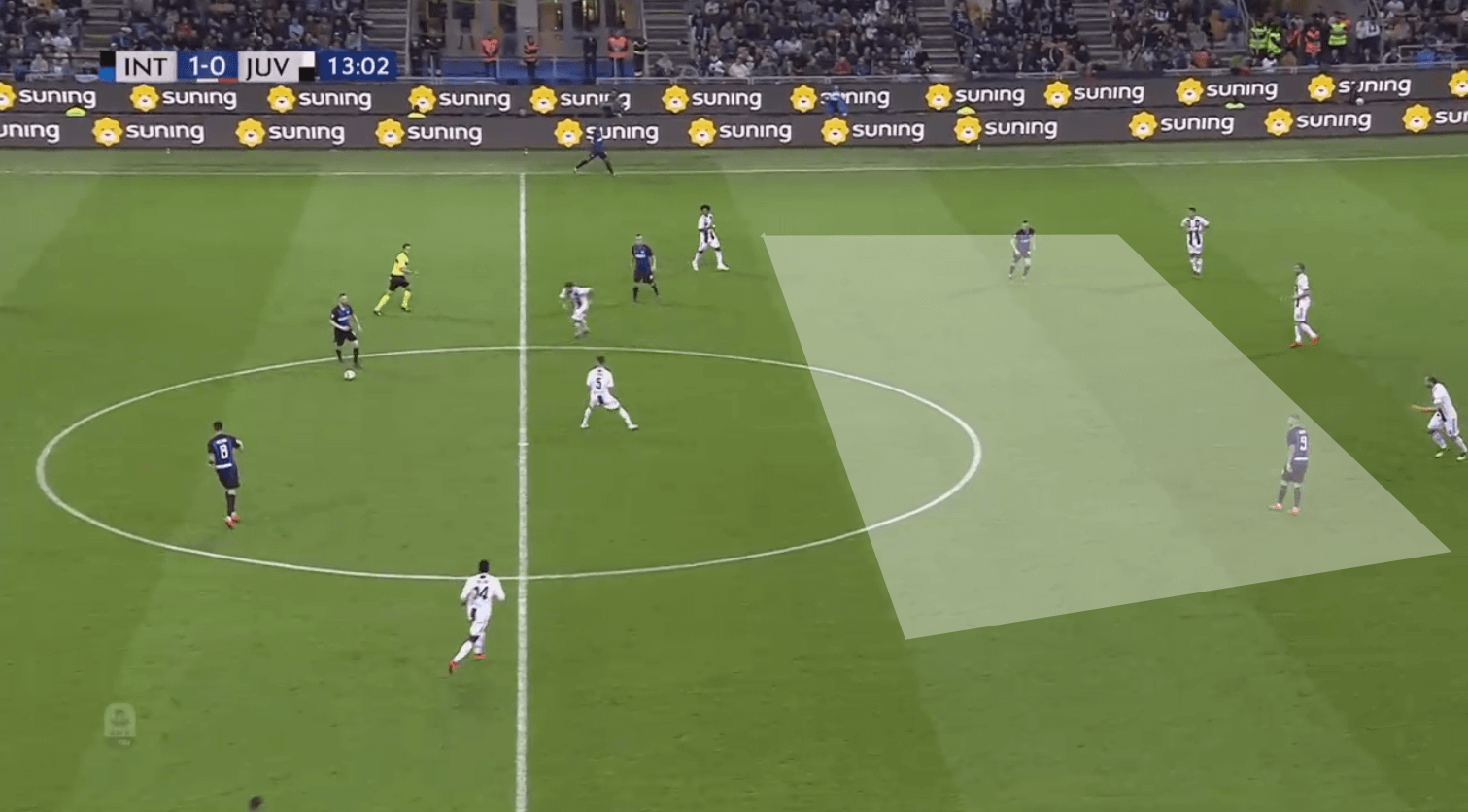
After 20 minutes, Juventus made one change that started to disrupt Inter’s build-up play. Miralem Pjanić started to man-mark Brozović. As a result of this minor change, Inter had more problems building out from the back. This meant their attacking transition slowed down and Juventus did a better job of getting compactness on their defensive block.
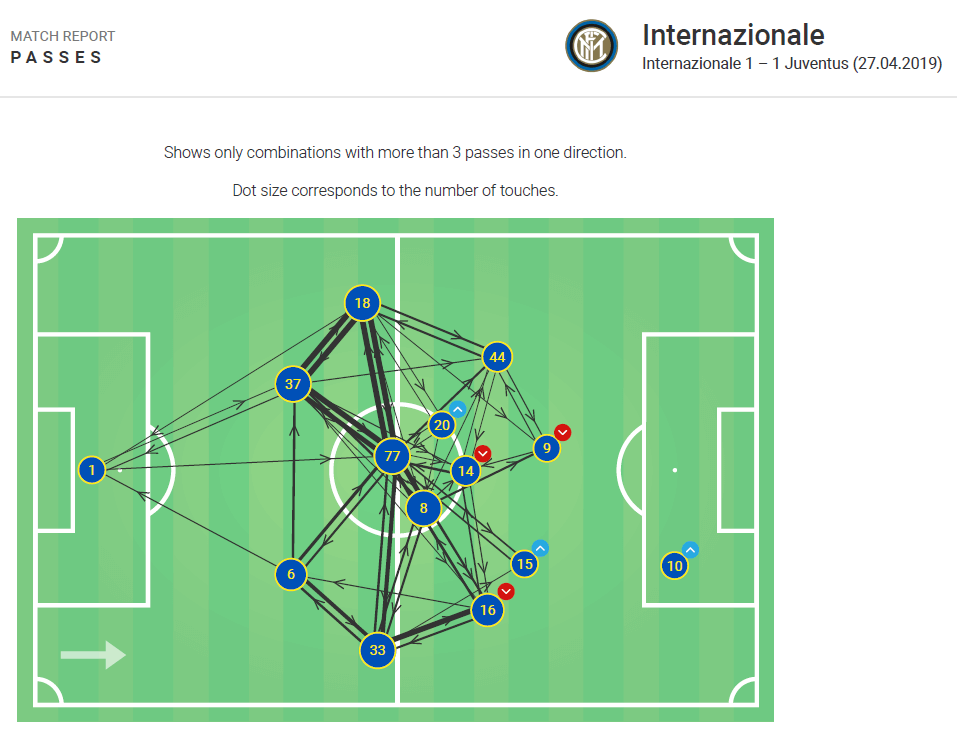
Ronaldo to the rescue
After the opening 30 minutes, the majority of this match was played out in the middle third of the pitch. Both sides were able to pass from the defence into the midfield, but they had problems moving into the final phase of play.
Juventus defended in a 4-4-2, but they moved into a 4-3-3 in the attack. On the left side, Blaise Matuidi would slide into the central midfield alongside Miralem Pjanić and Emre Can. Juan Cuadrado would move forward on the right-wing and play in the same line as Ronaldo and Bernardeschi. As a result of this, the majority of Juventus’ attack came down the right side as that’s where they had more support. The left side was often occupied by only Alex Sandro.
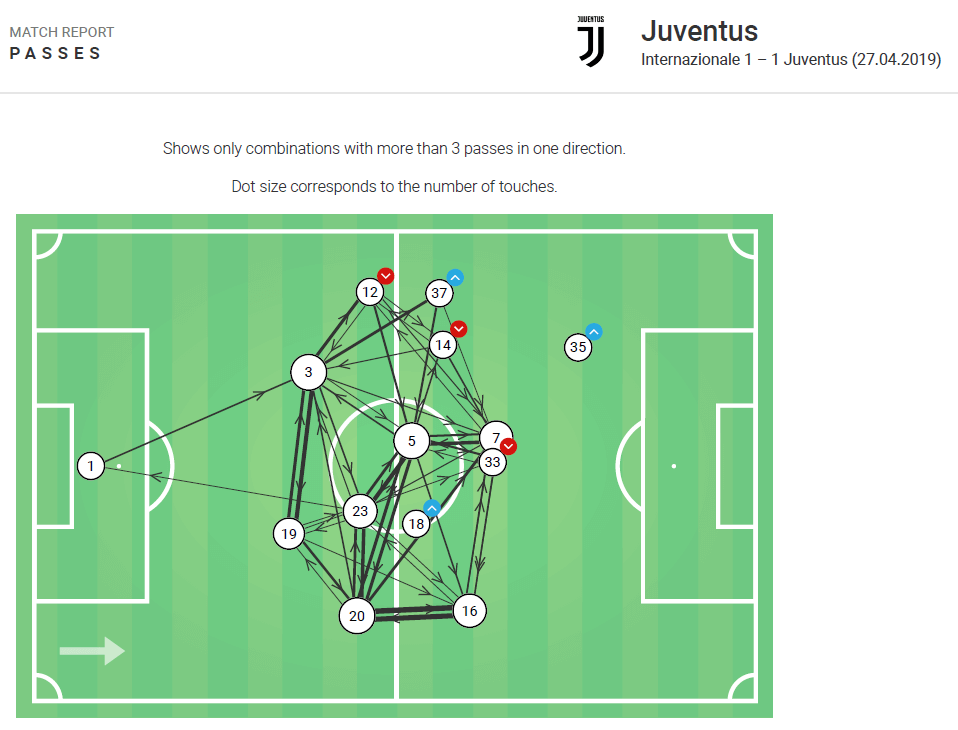
Juventus was able to defend better, but they still struggled to create clear chances. After the interval, Juventus started to commit more bodies forward in the attack. Even with the extra bodies, they were unable to create chances. Inter started to drop deeper in defence, with the fullbacks Danilo D’Ambrosio and Kwadwo Asamoah now staying in defensive positions.
In the 60th minute, Allegri made an important change. He took off a largely ineffective Matuidi and replaced him with Moise Kean. With this change, Juventus now attacked in a 4-4-2. Kean played at striker next to Ronaldo, while Bernardeschi moved out to a more natural left-wing. This had an almost immediate effect, as less than 120 seconds later, Ronaldo scored from just outside the box to level the game at 1-1.
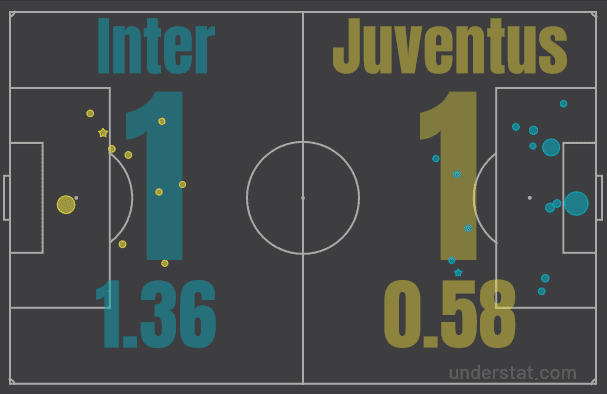
After the Juventus goal, there was a dearth of clear chances as both sides defended well. Both Inter and Juventus were able to stop any penetration in the final third, allowing sterile possession in the defensive line. As the clock wound down, it seemed that both sides were happy with a point.
Conclusions
Juventus didn’t have much to play for, while Inter had a chance to get closer to guaranteeing UEFA Champions League football next season. It was apparent early in the match that Inter were the more motivated side. They had success attacking an uncharacteristically disorganised Juventus defence with Brozović playing a key role. The Croatian was able to receive the ball from the defence and get it forward into the attack quickly. Inter were able to attack from wide areas, putting crosses into dangerous areas that Juventus struggled to deal with.
It wasn’t until Juventus used Pjanić to man-mark Brozović that Juventus were able to get into the match. This change slowed Inter’s build-up and allowed Juventus’ defence to get more compact. After this change, this match turned into a display of Italian defending. Both sides did well to prevent any clear scoring chances until the 62nd minute when a bit of quality from Ronaldo allowed Juventus to secure a draw.
If you love tactical analysis, then you’ll love the digital magazines from totalfootballanalysis.com – a guaranteed 100+ pages of pure tactical analysis covering topics from the Premier League, Serie A, La Liga, Bundesliga and many, many more. Buy your copy of the April issue for just ₤4.99 here, or even better sign up for a ₤50 annual membership (12 monthly issues plus the annual review) right here.

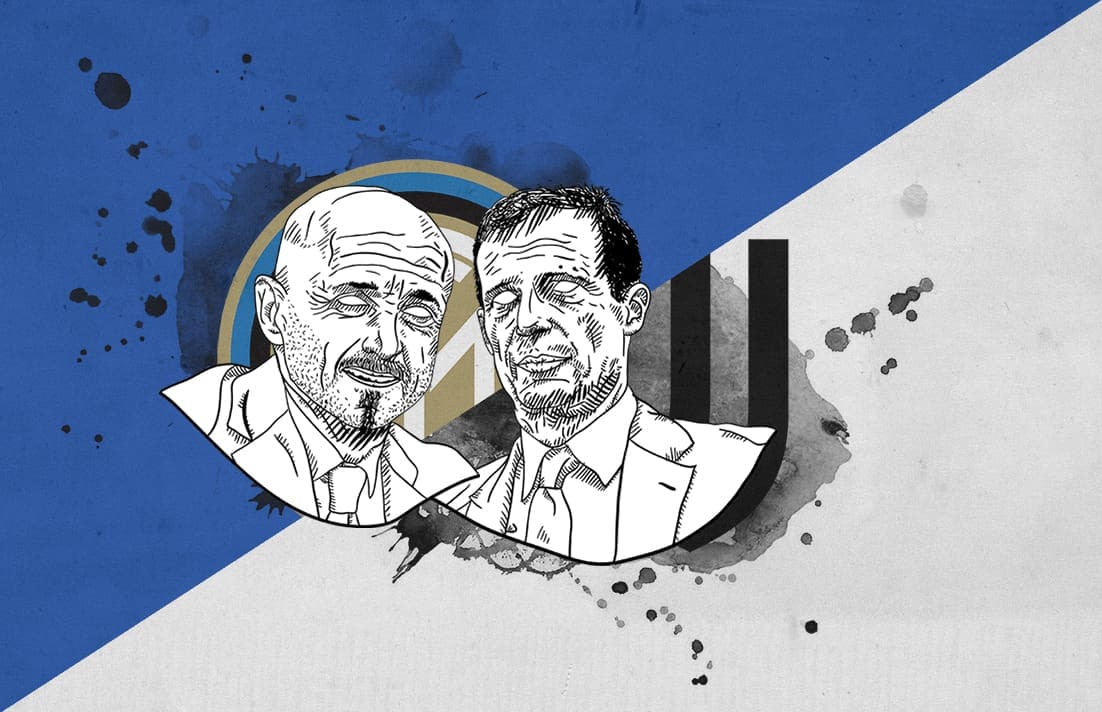


Comments